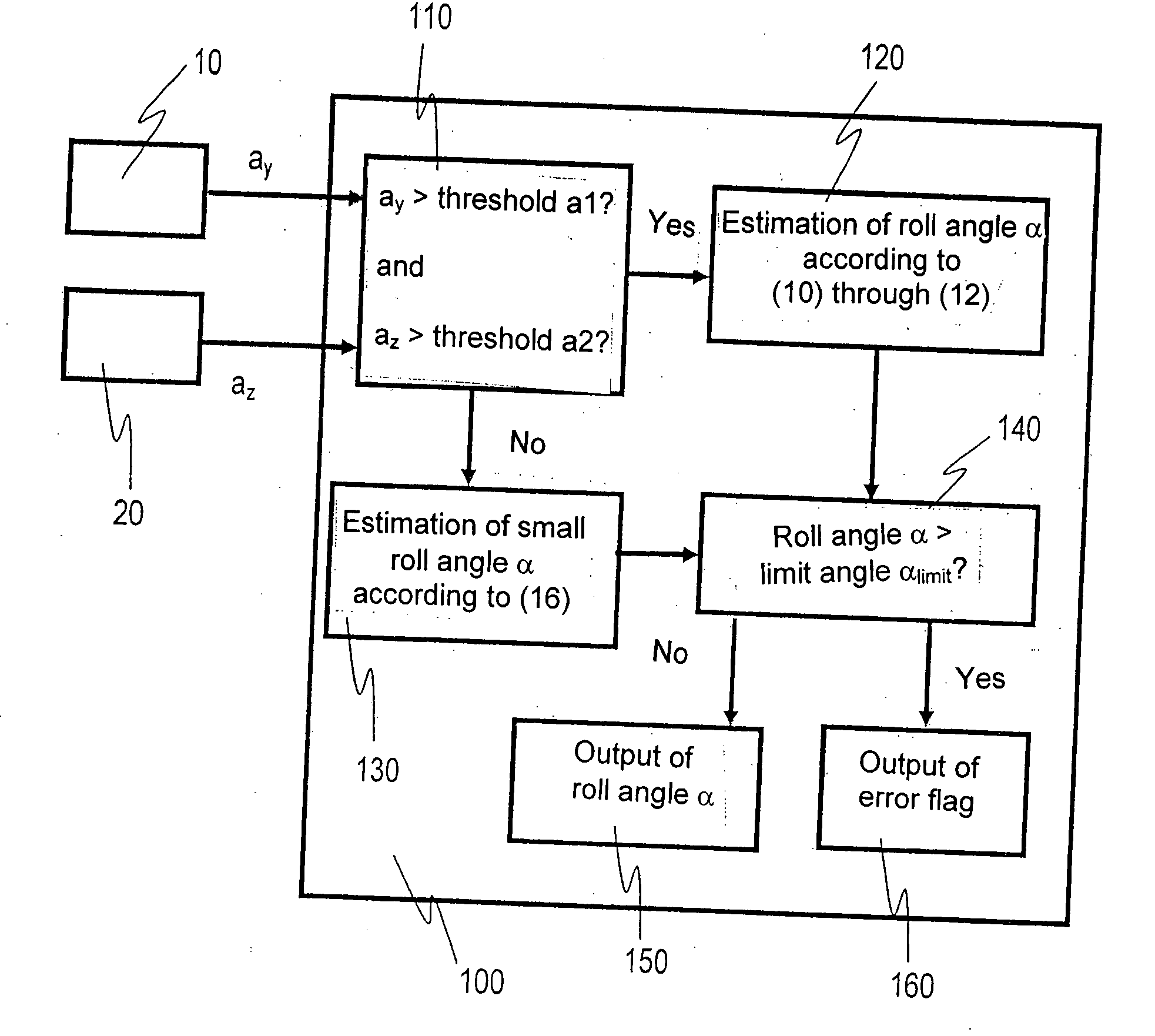Method and Device for Determining the Roll Angle for Occupant Protection Devices
a technology for occupant protection and roll angle, which is applied in the direction of pedestrian/occupant safety arrangement, vehicular safety arrangement, instruments, etc., can solve the problems of difficult to determine very small angles (5°), and the type of rollover known as soil-trip rollover
- Summary
- Abstract
- Description
- Claims
- Application Information
AI Technical Summary
Benefits of technology
Problems solved by technology
Method used
Image
Examples
Embodiment Construction
[0021]In general, early decisions for deployment of occupant protection means, e.g., seat belt tightening systems, head airbags, window airbags, and roll bars, are necessary and appropriate in the event of a rollover. In addition to the lateral vehicle speed, the roll angle at the beginning of such a rollover event therefore constitutes an important parameter for calculating the rollover in advance. With the conventional technical approaches, the signals of the transverse acceleration sensor and the vertical acceleration sensor are used only for detecting the type of rollover and for performing a plausibility check on the roll rate measured with a roll rate sensor and the roll angle calculated therefrom.
[0022]Furthermore, using a conventional method for determining the absolute angle of rotation of an object rotating about an approximately horizontal axis, the absolute angle of rotation of the vehicle is able to be determined using a vertical acceleration sensor and a roll rate sens...
PUM
 Login to View More
Login to View More Abstract
Description
Claims
Application Information
 Login to View More
Login to View More - R&D
- Intellectual Property
- Life Sciences
- Materials
- Tech Scout
- Unparalleled Data Quality
- Higher Quality Content
- 60% Fewer Hallucinations
Browse by: Latest US Patents, China's latest patents, Technical Efficacy Thesaurus, Application Domain, Technology Topic, Popular Technical Reports.
© 2025 PatSnap. All rights reserved.Legal|Privacy policy|Modern Slavery Act Transparency Statement|Sitemap|About US| Contact US: help@patsnap.com



